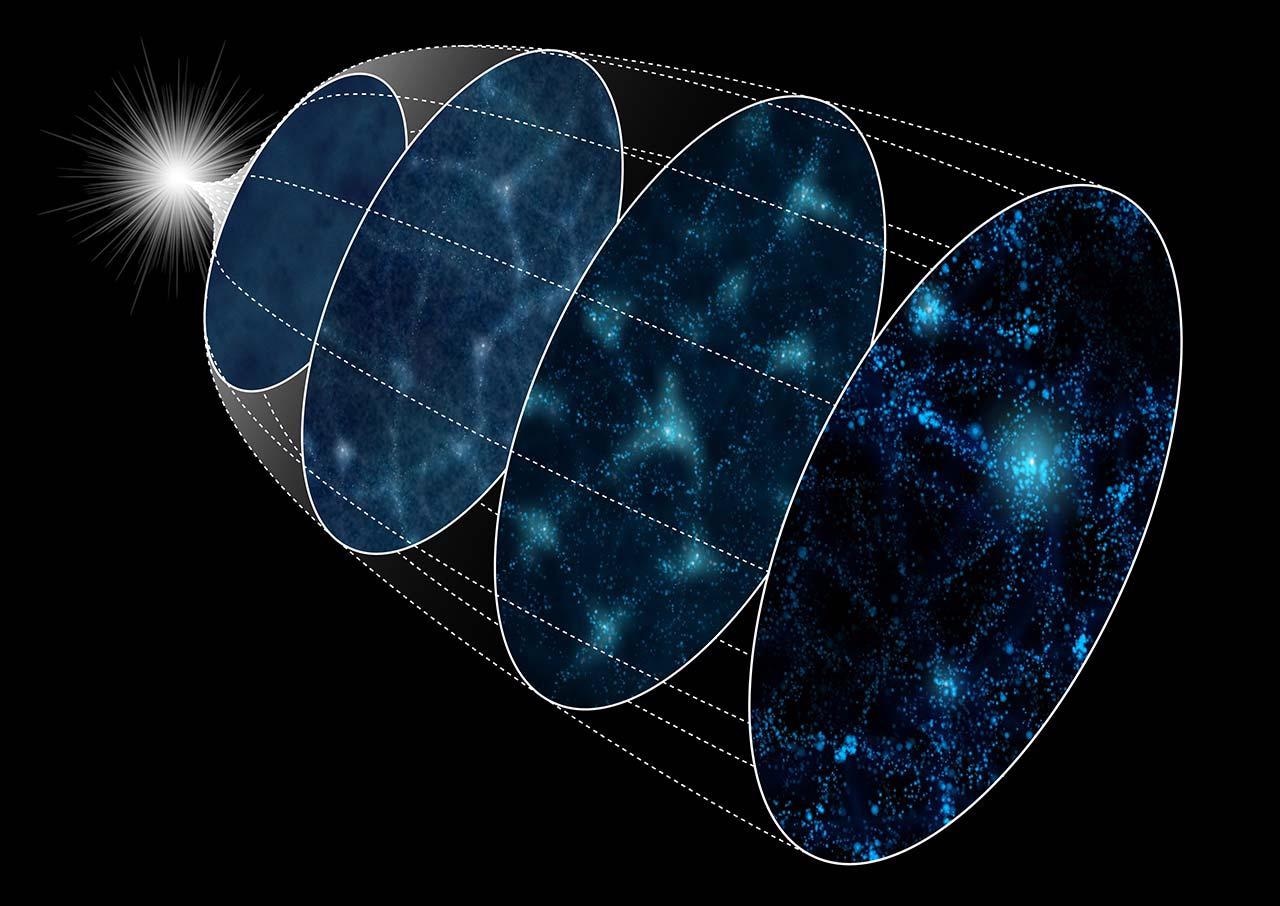Feb 16 2021
Astronomers have tested a technique for rebuilding the state of the early Universe by applying it to 4,000 simulated universes with the help of the ATERUI II supercomputer at the National Astronomical Observatory of Japan (NAOJ).
 Schematic diagram of the evolution of the Universe from the inflation (left) to the present (right). The 'reconstruction method' winds back the evolution from right to left on this illustration to reproduce the primordial density fluctuations from the current galaxy distribution. Image Credit: The Institute of Statistical Mathematics.
Schematic diagram of the evolution of the Universe from the inflation (left) to the present (right). The 'reconstruction method' winds back the evolution from right to left on this illustration to reproduce the primordial density fluctuations from the current galaxy distribution. Image Credit: The Institute of Statistical Mathematics.
They discovered that, along with new observations, the technique can set improved constraints on inflation, one of the most puzzling events in the history of the Universe. The approach can reduce the observation time needed to differentiate between several inflation theories.
As soon as the Universe came into existence 13.8 billion years ago, it expanded over a trillion, trillion times in size instantaneously, within a trillionth of a trillionth of a microsecond; yet it is not known why or how.
This impulsive 'inflation' is one of the most significant enigmas in modern astronomy.
Inflation must have made primordial density fluctuations, which would have impacted the spread of where galaxies developed. Therefore, mapping the galaxies’ distribution can exclude models for inflation that do not correspond with the data observed.
But processes apart from inflation also affect galaxy distribution, making it hard to extract data regarding inflation directly from observations of the large scale structure of the Universe—the cosmic web made up of innumerable galaxies.
Specifically, the gravitationally induced growth of groups of galaxies can conceal the primordial density fluctuations.
Under the guidance of Masato Shirasaki, an assistant professor at NAOJ and the Institute of Statistical Mathematics, a research group considered the use of a 'reconstruction method' to turn the clock back and eliminate the gravitational impacts from the large scale structure.
They employed ATERUI II, the fastest supercomputer in the world that has been dedicated to astronomy simulations, to develop 4,000 simulated universes and develop them via gravitationally driven growth.
Then, the researchers applied this technique to observe how well it rebuilt the beginning state of the simulations. They discovered that their technique can be correct for the gravitational effects and enhance the constraints on primordial density fluctuations.
We found that this method is very effective. Using this method, we can verify of the inflation theories with roughly one tenth the amount of data. This method can shorten the required observing time in upcoming galaxy survey missions such as SuMIRe by NAOJ’s Subaru Telescope.
Masato Shirasaki, Assistant Professor, National Astronomical Observatory of Japan
Journal Reference
Shirasaki, M., et al. (2021) Constraining primordial non-Gaussianity with postreconstructed galaxy bispectrum in redshift space. Physical Review. doi.org/10.1103/PhysRevD.103.023506.